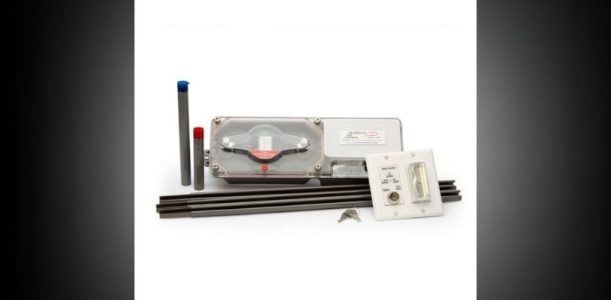
In commercial buildings, carbon monoxide (CO) detectors placed throughout ductwork are the best way to avoid CO poisoning, keep tenants or residents safe, and preserve lives. Carbon monoxide detectors are sensors that respond to CO and are attached to an alarm unit. These detectors and sensors generally comply with ANSI/UL 2075 Standard for Gas and Vapor Detectors and Sensors.
CO detectors can be used as a single unit system or integrated with a security or fire alarm system. This integrated system notifies first responders of a CO emergency. Some state codes mandate one detector should be placed every 100 feet of ductwork.
What is CO?
Carbon monoxide (CO) is also known as a “silent killer” because it is an invisible, odorless, tasteless, colorless, and non-irritating gas that can cause significant health problems including death, quickly. When ingested, CO inhibits the body from absorbing oxygen. The U.S. Centers for Disease Control and Prevention (CDC) estimates about 430 people die from accidental CO poisoning in the United States annually. In addition, more than 20,000 are injured or become ill from CO poisoning.
Symptoms include fatigue, nausea, dizziness, and headache. These symptoms imitate flu symptoms or other illnesses, and that’s why CO issues can be confused for different sicknesses.
Sources of Carbon Monoxide
If a commercial HVAC system is inefficiently operating and deficient oxygen is in the air, and the CO level is too high, you will have problems. That’s why it’s crucial to ensure your commercial building has a carbon monoxide detector installed by a trained professional. A sensor can indicate rising CO levels and save employees, occupants, and visitors before permanent damage.
There are many potential sources of CO in a commercial building:
- Gas-fired dryers and washing machines
- Gas-fired ranges and ovens found in cafeterias, commissaries, and kitchens
- Use of gas-fired power tools inside a facility
- Running vehicles inside a parking garage or loading dock
- Gas-fired boilers and water heaters
- Heating systems
UL Listed, High-Tech CO Detectors
Several carbon monoxide detectors for ductwork on the market today provide very early detection in the air circulating through a commercial HVAC system. They are outfitted with a UL-Listed electrochemical sensor that alerts at certain PPM carbon monoxide levels mandated hazardous by OSHA and the NFPA. Most CO sensors have a life span of 6 to 10 years from the manufacturing date. But this number might vary depending on environmental conditions; low relative humidity and high temperatures can dry out sensors. Wet, humid conditions can also be problematic. Often, historical information can be recalled from the detector to help in identifying the source of a CO issue or leak.
Other features available from today’s commercial detectors:
- “Snap-in” sensors that are easily removed at the end of life
- Test mode for an aerosol test of CO
- Self-test initiated every day
- Connectivity to other units
- Internal dust filtering by sensors
- Fire alarm system compatible
- Wiring instructions affixed directly to the unit
Integrated CO Detectors Provide the Greatest Value
The cost of purchasing and installing a CO detector depends on the type of unit and warning system. CO detectors can be installed in single or multiple locations, and integrating them with your commercial fire alarm and life safety system provides the greatest value. Integrated detectors can send signals to an outside station ensuring constant monitoring, instantaneous notification, and immediate response.
HRSS Offers High-Tech CO Detectors for Ductwork
High Rise Security Systems offers CO detectors for ductwork such as the Space Age SSU-SL-701 Duct Carbon Monoxide Detector. The SSU-SL-701 contains an electromechanical sensor that notifies of CO detection when PPM reaches levels deemed hazardous by the NFPA and OSHA. The Space Age CO Detector for Ductwork has many additional features such as:
- Functional operation indicated by an LED light in solid green
- Performs a self-test every 24 hours
- It can be easily replaced with a “snap-in” sensor at end-of-life
- Can connect to up to 30 additional units
- Complete wiring details are attached to the unit
- Stores historical data at the unit that is retrievable
Space Age CO Detectors for Ductwork contain these advanced features and more.
HRSS provides more than 30 years of experience designing complex fire and security systems for many commercial buildings, including high rises, hotels, and hospitals. Our commercial fire alarm design specialists will work closely with all interested parties to assist in integrating your alarm system with carbon monoxide detection systems. Contact us to learn more about protecting your people and property with CO duct detectors.



